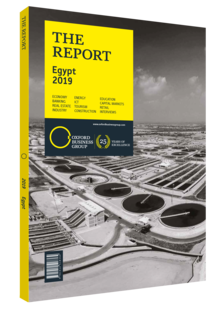Regulatory understanding key to broadening the reach of Egyptian banks
Taken together, the Central Bank of Egypt and the Banking Law No. 88 of 2003 act as prudent enablers for the domestic banking industry. However, much of the nation’s increasingly complex financial arena is governed by other bodies and regulations. Many of the non-core activities of Egypt’s banks fall into what is collectively known as non-banking financial services, which are overseen by the Financial Regulatory Authority (FRA) and governed by a patchwork of legislation. Real estate finance, for example, is supervised according to the Real Estate Financing Law No. 148 of 2001, financial leasing is regulated by the Financial Leasing Law No. 95 of 1995, and insurance activity takes place under legislation dating back to 1981, as well as several more recent executive regulations and amendments. Microfinance, meanwhile, is subject to the Microfinance Law No. 141 of 2014. This means that domestic banks must be aware of an array of compliance issues as they develop their non-core offerings, and as rapidly expanding disciplines such as microfinance become more central to the operations of domestic banks, a firm grasp of the regulatory environment will become ever more important to succeeding in the segment.
Sector Reform
The regulator is currently implementing a strategic plan for the non-bank financial sector, which it first rolled out in April 2018. The 2018-22 strategy takes a broad approach to its principal objective, which is to bring a greater number of Egyptians into the sphere of financial services. This will include the promotion of the Egyptian Exchange as an alternative source of funding for national projects, increasing aggregate real estate financing from LE8bn ($449.6m) to LE20bn ($1.1bn), and raising the leasing portfolio from LE24bn ($1.3bn) to LE50bn ($2.8bn). The plan also aims to increase the number of recipients of microfinance from the current 2.5m to 4m people, and the amount of microfinance loans issued from LE11.5bn ($646.3m) to LE15bn ($843m). As part of this effort, the number of microfinance companies is expected to grow to 1000. To date, banks in Egypt have acted as facilitators of microfinance, rather than leading the development of the sector. Their primary function has been to provide tranches of funding to NGOs and microfinance institutions (MFIs) which are incapable of funding their own operations due to a prohibition on them accepting deposits. A comprehensive regulatory framework for microfinance institutions introduced in 2014 has resulted in an influx of MFIs and NGOs to the sector, which banks have been content to supply with capital. A microfinance initiative launched in May 2017 by the CBE has not significantly altered the model by which banks act as liquidity providers to smaller intermediaries. The scheme, developed jointly with the Egyptian Microfinance Federation (EMF) and the FRA, aims to direct LE30bn ($1.7bn) to 10m beneficiaries by 2021 and will see eight banks offer subsidised funding to MFIs and NGOs licensed by the regulator. Those banks lending to microfinance intermediaries are permitted to include the credit in their calculations for the CBE’s SME lending quota, the deadline for which is 2020.
Looking Ahead
While the microfinance targets of the government’s non-banking financial sector reform strategy do not tally with the earlier microfinance initiative of the EMF, the direction is clear: microfinance will play a bigger role in the economy over the coming years. How banks respond to this development is one of the more salient questions at present and going forward. The 2017 initiative allows for the direct funding of microfinance clients by banks, without the need for either an MFI or NGO intermediary. In sub-Saharan Africa large banks have already moved into microfinance, attracted by sustainability and profitability. Their approach has been to offer short-term loans at high interest rates, in return for minimal or no collateral, coupled with frequent repayment schedules and quick disbursement procedures. Egyptian banks, though historically wary of small-ticket lending, may find that domestic microfinance warrants a similar approach.
You have reached the limit of premium articles you can view for free.
Choose from the options below to purchase print or digital editions of our Reports. You can also purchase a website subscription giving you unlimited access to all of our Reports online for 12 months.
If you have already purchased this Report or have a website subscription, please login to continue.

